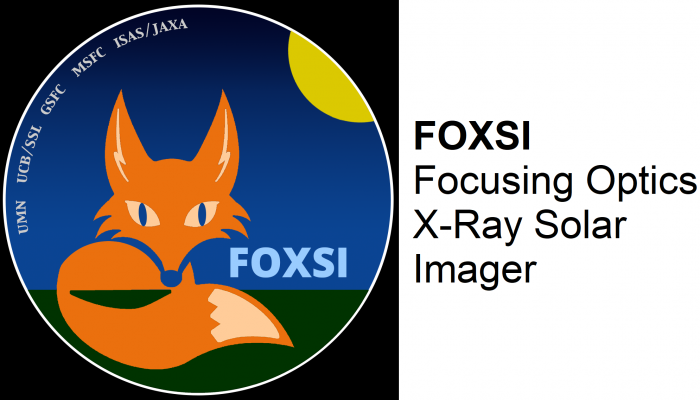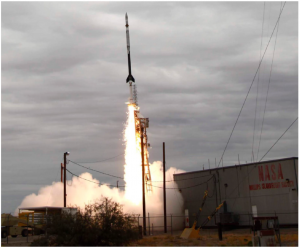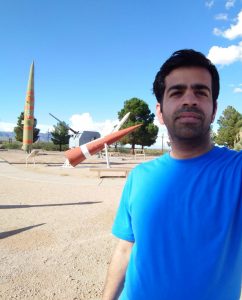
For decades, high-energy aspects of the Sun have been studied using indirect imaging and spectroscopy in hard X-rays (HXR) by the pioneering RHESSI spacecraft. However, advanced understanding of small-scale energy releases and particle acceleration in the outermost layer of the Sun require better sensitivity and dynamic range, which can be achieved by using direct focusing X-ray optics. Almost six years ago, in 2012, the Focusing Optics X-ray Solar Imager (FOXSI) rocket experiment first imaged the Sun in hard X-rays (4 – 20 keV) using direct focusing optics, from an altitude of about 300km. The second flight in 2014 made striking observations such as the evidence for the existence of solar nanoflares from a non-flaring active region [1] and plasma temperature distribution of microflares.

The Terrier/Black Brant IX rocket successfully launched FOXSI-3 to observe the X-ray Sun, Sep. 7, 2018 from Launch Complex 36 at White Sands Missile Range, New Mexico.
On 7 September 2018, team FOXSI launched its third successful flight from White Sands Missile Range (WSMR), New Mexico. FOXSI-3 flight also served as a test bed for advanced space instrumentation such as
(i) ‘3D printed collimator’ to block X-rays coming off the coverage area,
(ii) fine pitch CdTe strip detectors, and
(iii) Soft X-ray (SXR) capability to our telescope using CMOS sensors.
To focus X-rays, the team uses extremely polished surfaces called ‘X-ray mirrors’, fabricated and calibrated at NASA Marshall. FOXSI uses 7 optic modules, with each containing nested X-ray mirrors, coated with Iridium. Photons hitting at grazing angles (less than 0.5°) get reflected to a focal point from where they are imaged using photon counting energy sensitive semiconductor detectors made of Si and CdTe. The flight optic modules were calibrated using the Stray Light Facility at NASA Marshall. The blocking performance of 3D printed collimator and blockers were well tested and duly validated with ray tracing simulations. The HXR detectors were calibrated at the University of Minnesota, while operating at -10°C using a well tailored temperature controller that met all the requirements for a controlled cooling and warming up. Our Japanese collaborators provided the PhoEnIX (Photon Energy Imager in X-rays) instrument, which added soft X-ray capability to the FOXSI-3 experiment by observing in the 0.5 – 5 keV using CMOS sensors. The solar alignment aspect system was developed and tested at NASA Goddard.
Mechanical fit checks and optics alignment tests were conducted at SSL, Berkeley before shipped to WSMR. We spent weeks of tireless teamwork and carried out all necessary checks, with proper breaks for outing and cooking! We started our launch day at 2.30AM by kicking our cooler to ramp down to -20°C, while we rejoiced yummy donuts, cookies and coffee. Watched the impressive launch, steered our telescope for ~ 6 minutes and observed the X-ray Sun!
Simultaneous imaging and spectroscopy of the Sun in SXR and HXRs using direct focusing optics and photon counting detectors have never been done before! FOXSI-3 demonstrates the technology readiness and robustness available for a future dedicated solar HXR space observatory to study the high-energy phenomena with intricate details. This will unavoidably broaden the horizons of the solar and heliospheric community. Preliminary results from FOXSI-3 will be discussed in the American Geophysical Union Fall Meeting in December 2018.
[1] Detection of nanoflare-heated plasma in the solar corona by the FOXSI-2 sounding rocket, S. Ishikawa, L. Glesener, S. Krucker, S. Christe, C. Buitrago-Casas, N. Narukage, J. Vievering, Nature Astronomy, 2017
This post is written by Subramania Athiray Panchapakesan
from the FOXSI team working in the University of Minnesota


